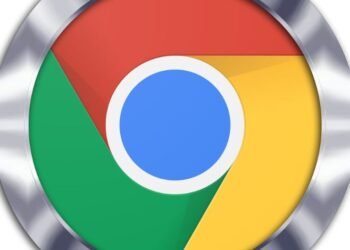Intel Receives $536 Million Interest on EU Antitrust: legally twist and what this payment for Intel today means.
Each time at a time you stumble on a headline that prevents you from the middle role. This happened to me when I read: “Intel receives an interest rate of $536 million on the EU’s antitrust,” a case that highlights the importance of Tech Policy & Regulations in the global tech industry. Intel Receives $536 Million Interest on EU Antitrust:.
Wait for a moment, did I read it right? Intel gets money? From the EU? of interest? If you are something like me, the first idea would probably be: “Fang… Wasn’t there an intel that was fined a billion euro years ago? How was it turned around?”
Well, I felt better about my curiosity, and I work deep in history. What I found is not only an attractive corporate drama, but also a lesson in patience, endurance and legal and economic systems in the real world. So let’s unpack it to everyone in regular English, without misleading legal jargon.
1. Fast snapshot: It is necessary to know you
Before you dive into long history, you can put a direct post with the main facts:
- Received amount: € 515.547,908,15 (approx. 536 million dollars)
- Why: Interest in a scrap European antitrust
- Basic Bot: 1.06 billion euros imposed in 2009
- Payment date: November 6, 2024
- Ongoing problem: A separate fine of € 376 million is still disputed
Think of it as your “tl; dr” (very long; not read) version. Now that we have covered the basics, to see how we came here.
2. Why was Intel fined first?
Pictures in the late 2000s. The Intel chip was the undisputed king of the world. At that time, the only prominent rival, AMD, tried to compete, but the doors were often found closed.
The EU Commission (EC), which is the EU competition guard, accused Intel of abusing its great market status. How? By allegedly offering conditional discounts to computer manufacturers, it is really said: “Hi, if you buy our pieces (and only our pieces), we will cut you a better deal.”
This standard business may look like practice, but in the Competition Act it is seen as competitive behavior. The EF claimed that Intel’s strategy damaged AMD and limited consumer options. Intel Receives $536 Million Interest on EU Antitrust:.
In 2009, the Commission dropped a bombing: A record -breaking against EUR 1.06 billion against Intel. For reference, it was one of the biggest mistakes in history at that time.
3. The Long Legal Battle (2009-2024)
Things get interesting here. Intel not only accepted the fine. Instead, he rolled his sleeve and began a legal marathon that spread for more than a decade.Intel Receives $536 Million Interest on EU Antitrust:
- 2009: The European Commission fined Intel 1.06 billion euros.
- 2014–2017: Intel appealed for the decision and argued that the Commission’s analysis was wrong.
- 2022: The EU’s general court described an important part of the fine, and decided that the Commission’s financial evidence was not strong enough to justify punishment.
- 2023: The Commission implemented a small fine of € 376 million, which stabbed its weapons on some parts of the case.
- 2024: Intel receives € 515.5 million, which pays interest for interest on refund from fine.
This timeline shows how this match can happen. Thirteen plus years later, and the saga is still not quite over. Intel Receives $536 Million Interest on EU Antitrust:.
4. Why did Intel get interested?
Here is the part that increased me an eyebrow: Not only Intel got the money back, but the EU also had to pay interest.
Think about it: Intel returned 1.06 billion euros in 2009. For years this money put in the EU accounts, while the legal destruction continued. When the bot was canceled, it was not enough to return the original amount for the EU, they had to compensate for Intel for loss of money.
Justalt has the European Court of Justice (ECJ) set an example: The European Central Bank (ECB) refinancing rate + 3.5 percent marks standards to be paid.
During these years, it paid a balloon for Intel on November 6, 2024 for € 515.5 million.
5. Human angle: Imagine it happened to you
To make it easier, let’s use a simple analogy.
Imagine that you accidentally pay $ 1000 to your bank that you don’t really do. The bank shrinks and holds it. Ten years later, after countless back and forth, the bank finally accepts the error and gives you $ 1000 back. But so far, the money has been closed for a decade. Of course, they are also interested in you.
This originally added to what happened between the Intel and the European Commission, just add some zero (ok, a lot of zero).
6. Why does that mean something outside of Intel
You might be wondering: “Okay, calm for Intel. But why should I care?”
Why is there a wave effect in this case here:
- Financial examples: If the regulators lose in court, they not only give the money back, they are on the hook for decades of interest. This is a great encouragement to make a decision for the first time.
- Business strategy: Companies facing large, fine, can be more motivated to challenge them, knowing that there is a chance that they can not only win, but also put extra money in their pocket.
- During the investigation of EU regulators: The case raises questions about strengthening the Commission’s analysis in high-profile conditions. Critics can ask: If a fine can overturn after so long, the evidence was really solid?
- Mobility in the technology industry: For Intel is not just financial, it stands out. They may partly indicate it as a release, even like other bot.
7. A deep dive in number
Let’s talk for a moment, while telling an attractive story.Intel Receives $536 Million Interest on EU Antitrust:
- Received interest: € 515,547,908,15 (approx. 536 million dollars)
- Dhanwapi Date: November 6, 2024
- Calculation method: ECB refinancing rate + 3.5%
- Basic fines: € 1.06 billion (2009)
- Remain nice: € 376 million required in 2023
This is almost irony: The interest received by Intel is greater than the entire year’s profit for many companies. This fact only emphasizes how high the games in the antitrust enforcement of the EU.
8. My personal technology: Payment of patience (literally)
Here I get a little personal.
I remember I once fought more than a $ 50 fee with my internet provider. I should spend hours on the phone, send e -mail back and forth and wait for several weeks before a refund. And let me tell you, when I saw that $ 50 pop came back to the balance, I felt like I had won the lottery.
Imagine the same feeling… But was multiplied by about 10 million. When 515 million euros returns to the lap, it should be felt what Intel should be felt.
It is a reminder that sometimes firmness, even when Auds looks against you, can pay the most unexpected ways. Intel receives $ 536 million interest on EU antitrust fines.
9. The saga is not over yet
This victory as a victory is for Intel, the story is not completely wrapped. The EU Commission introduced a fine of € 376 million in 2023 on aspects of the original case. Intel still disputes.
So when they celebrate a fall of $ 536 million, another match is loose on the horizon. The European Union, for its share, will hardly withdraw easily, not only because of money, but also on the line of reliability as a competition regulator. Intel receives $ 536 million interest on EU antitrust fines.
10. Lesson for businesses and regulators the same
So what can we remove from this saga?
- For companies: If you think you are right, do not be afraid to challenge the regulators. Yes, it is expensive and takes time, but payment can be very large.
- For regulators: Accurate cases. A quantity or weak certified decision can reduce taxpayers from the line at a distance of hundreds of crores.
- For everyday people: This recalls that the rules of justice in the markets not only affect the companies, but also consumers. When competition is stopped, the innovation slows down and the options shrink.
Key Takings
- At first glance, it may look like a simple David vs.Golith history, except, David is a technical veteran of $ 200 billion.
- But something big under the headline: A case that can affect how regulators and companies collide for the coming years.
- For Intel, there is a reminder that endurance in the legal field can receive a large scale price.
- For the EU, it is an indication to go carefully with the Arab eurofin.
- And for the rest of us? This is a strangely satisfactory story about how the underdog (or in this case mega-dog) sometimes achieves the final laughter.
- So the next time you find more disappointed than a $ 50 reimbursement, just remember that Intel is counting a place with half a billion interest rates and maybe paying in the end smiling in long matches.
Additional Resources:
- Reuters – Intel gets $536 million in interest from EU antitrust fine: Covers Intel’s receipt of €515.55 million in interest from the annulled €1.06 billion fine and explains the timeline of payments.
- MLex – Intel gets EUR515 million from EU Commission over annulled fine: Specialist legal and regulatory reporting with detailed breakdown of how the EU structured the repayment and interest.
















